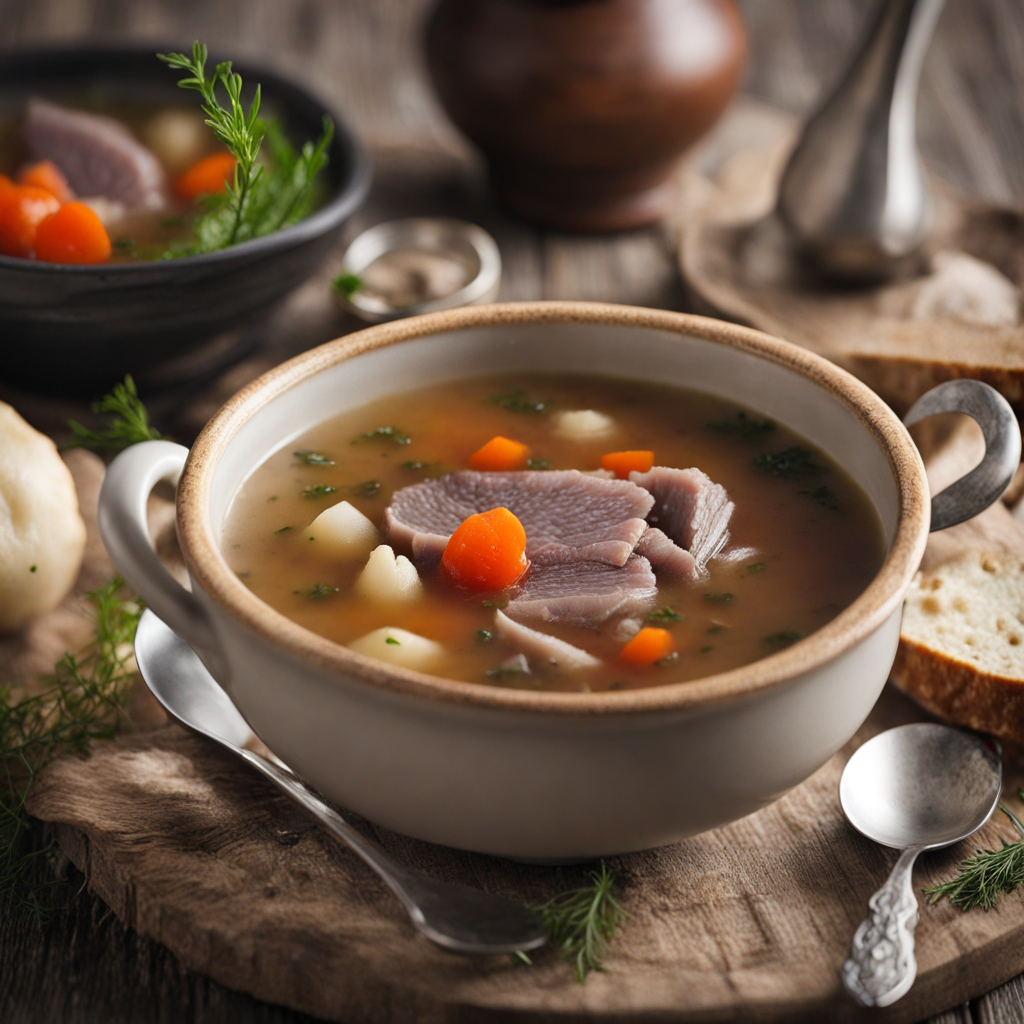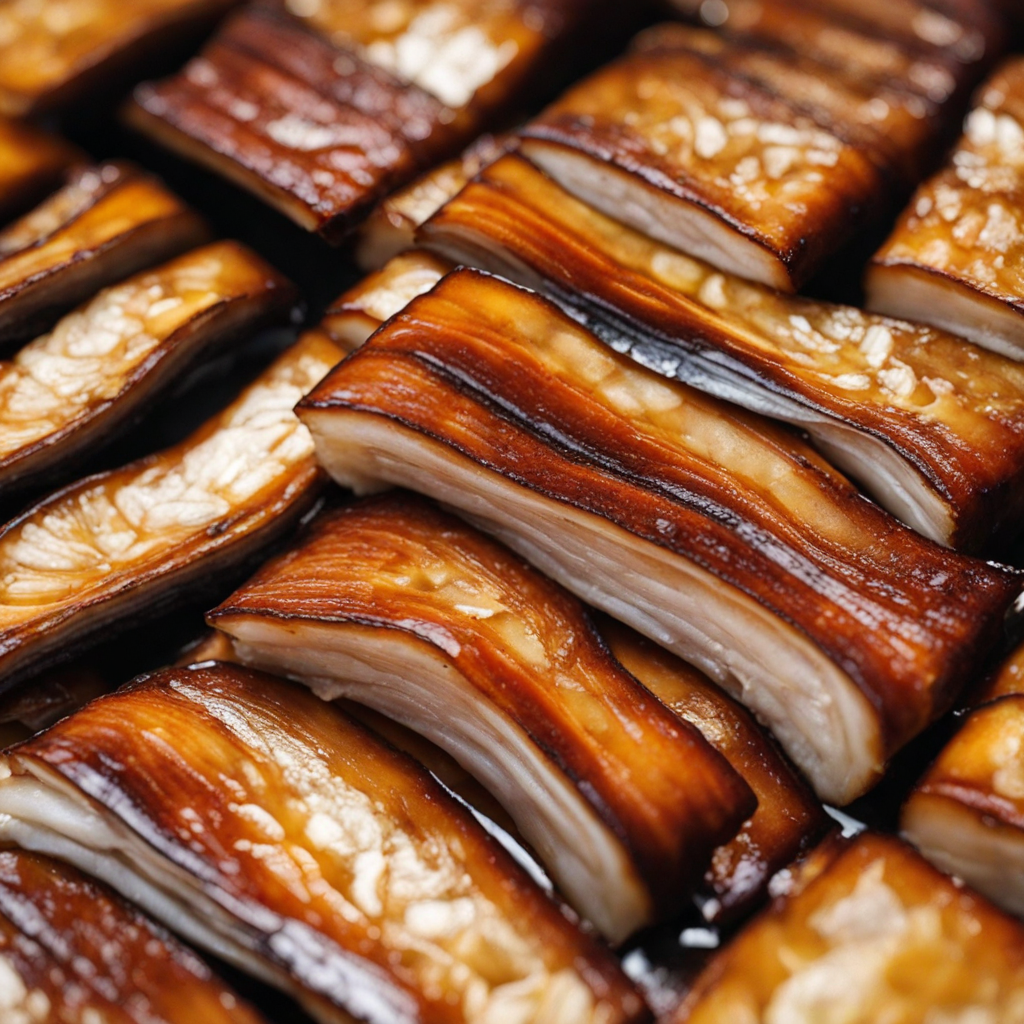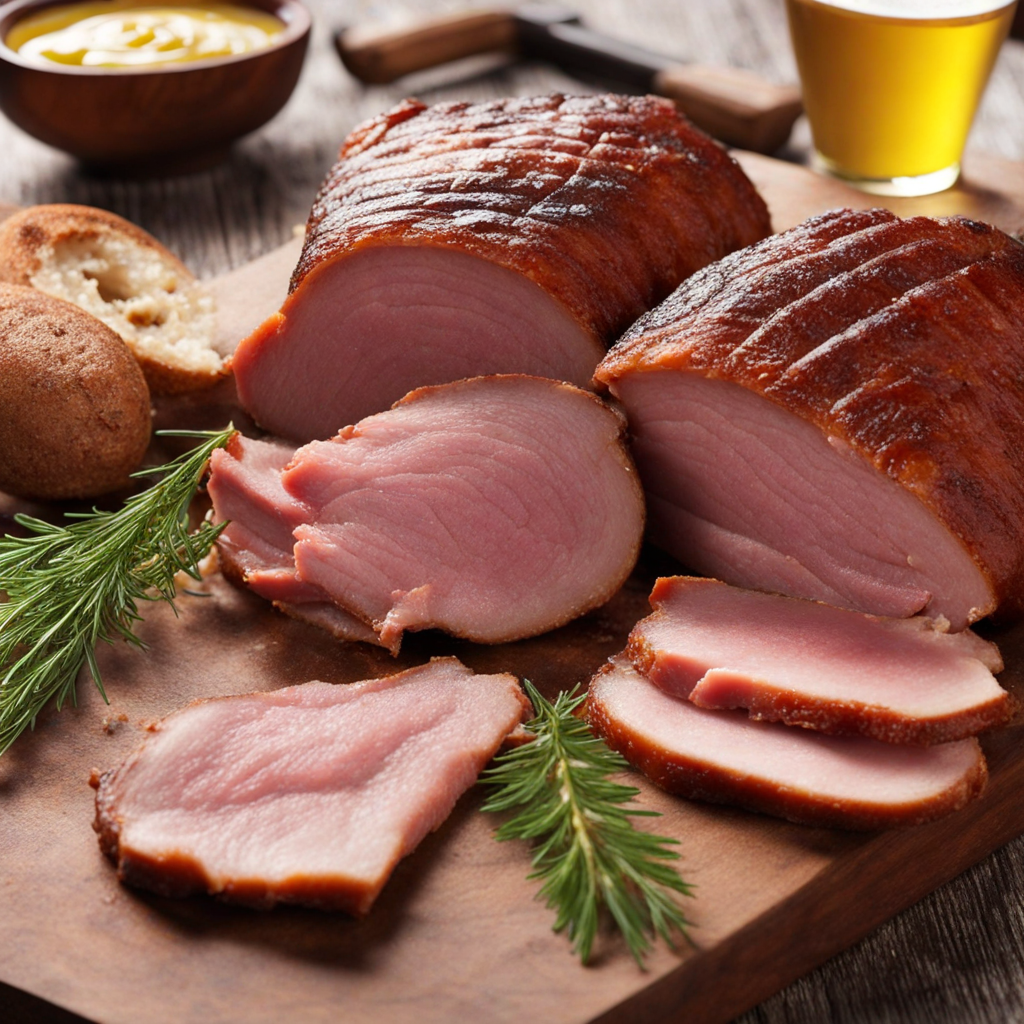Seal Soup
Seal Soup, or "hüljesupp" in Estonian, is a unique and traditional dish that captures the essence of Estonia's coastal heritage. This hearty soup features tender pieces of seal meat, which is prized for its rich, gamey flavor. The meat is often simmered slowly to achieve a tender texture, allowing the natural oils to infuse the broth. The addition of root vegetables such as potatoes, carrots, and sometimes parsnips complements the seal meat, creating a comforting and nourishing meal that embodies the rustic charm of Estonian cuisine. In terms of flavor, Seal Soup presents a delightful balance between the briny taste of the sea and the earthiness of the vegetables. Spices like black pepper and bay leaves are commonly used to enhance the dish, while fresh dill is often added just before serving, lending a fragrant and bright note. The soup is typically served hot, often accompanied by a slice of dark rye bread, which is perfect for dipping into the savory broth. This combination makes for a satisfying experience that is both filling and warming, ideal for the chilly Estonian climate. Experiencing Seal Soup is not just about the taste; it’s about connecting with Estonia's rich maritime culture. This dish is often prepared during special occasions or family gatherings, symbolizing a connection to the past and the natural resources of the region. For adventurous food lovers, trying Seal Soup offers a glimpse into the traditional practices of Estonian cuisine, showcasing how local ingredients can create a dish that is both unique and deeply rooted in the country's history.
How It Became This Dish
The History of Hülgerosolje: Estonia's Culinary Gem Origins: The Birth of Hülgerosolje Hülgerosolje, a unique culinary concoction from Estonia, embodies the rich tapestry of the country’s agricultural practices and cultural identity. The name itself derives from the Estonian words "hülge" (seal) and "rosolje" (a type of sauce or dressing), showcasing its maritime roots. The dish is thought to have originated in the coastal regions of Estonia, where the local population relied significantly on the bounties of the sea for sustenance. The earliest references to Hülgerosolje can be traced back to the mid-19th century, a time when Estonia was under Russian Empire rule. The dish likely drew inspiration from traditional Russian cuisine, which also featured a variety of sauces and dressings, often served with fish or meat. However, Hülgerosolje evolved into a distinctly Estonian product, marrying local ingredients and flavors. Cultural Significance: A Symbol of Estonian Identity In Estonia, food is not merely a means of sustenance; it is a vital component of national identity. Hülgerosolje serves as a culinary metaphor for the resilience and adaptability of the Estonian people. The dish has its roots in a time when Estonia was struggling for independence and seeking to carve out a unique cultural identity. As Estonians embraced their rich culinary heritage, Hülgerosolje emerged as a beloved traditional dish, often prepared for festive occasions, family gatherings, and national celebrations. The ingredient list for Hülgerosolje typically includes herring, potatoes, onions, and a creamy sauce made from sour cream or mayonnaise, often seasoned with herbs like dill. The use of herring, a fish abundant in the Baltic Sea, highlights the importance of fishing in Estonian culture. Herring has been a staple in the Estonian diet for centuries and has played a crucial role in shaping the country’s culinary landscape. The dish’s creamy texture and savory flavors have made it a favorite among locals and visitors alike. Development Over Time: From Tradition to Modernity As Estonia navigated through the tumultuous 20th century—marked by wars, occupations, and eventual independence in 1991—Hülgerosolje remained a steadfast fixture on Estonian tables. The dish underwent subtle transformations over the years, reflecting changing tastes, availability of ingredients, and the influence of globalization. In the post-independence era, Estonians sought to reconnect with their culinary roots. Hülgerosolje was revitalized as chefs and home cooks alike experimented with new interpretations while respecting its traditional essence. The rise of the Estonian slow food movement in the early 2000s further propelled the dish into the spotlight, emphasizing local, seasonal ingredients and traditional preparation methods. This movement aimed to celebrate Estonia’s agricultural heritage and promote sustainable food practices. Modern variations of Hülgerosolje have emerged, with chefs incorporating contemporary techniques and flavors. Some versions feature smoked herring or incorporate vegetables like beets and carrots, adding vibrant colors and textures to the dish. The creamy sauce may be embellished with local spices or even replaced with vegan alternatives, catering to a growing demand for plant-based options. These adaptations reflect broader culinary trends while maintaining a connection to the dish’s historical roots. Hülgerosolje in Contemporary Estonia: A Culinary Renaissance Today, Hülgerosolje is celebrated not just as a traditional dish but also as a symbol of Estonia’s culinary renaissance. The resurgence of interest in local and traditional foods has led to a revival of Hülgerosolje in restaurants, homes, and food festivals across the country. It is common to find the dish featured on menus at both casual eateries and upscale dining establishments, often accompanied by locally brewed beers or spirits. Food festivals, such as the Tallinn Food Festival and the Saaremaa Food Festival, showcase Hülgerosolje alongside other Estonian delicacies, promoting the nation’s culinary heritage to both locals and tourists. These events serve as platforms for chefs to experiment and innovate while honoring traditional recipes, creating a vibrant culinary scene that celebrates Estonia’s history and culture. Moreover, Hülgerosolje has transcended its humble origins to become a dish that embodies the spirit of Estonian hospitality. It is frequently served during communal gatherings, holidays, and celebrations, fostering a sense of togetherness and connection among those who share it. The act of preparing and sharing Hülgerosolje has become a cherished ritual, allowing families and friends to come together and celebrate their heritage. Conclusion: Hülgerosolje as a Culinary Heritage In summary, Hülgerosolje is more than just a dish; it is a reflection of Estonia’s rich history, cultural significance, and evolving culinary landscape. From its humble beginnings in the coastal regions of Estonia to its contemporary status as a beloved national dish, Hülgerosolje tells a story of resilience, adaptation, and pride. As Estonia continues to embrace its culinary heritage, Hülgerosolje will undoubtedly remain a cherished part of its gastronomic identity, inviting future generations to savor and celebrate the flavors of their rich cultural past. As the world becomes increasingly interconnected, Hülgerosolje stands as a testament to the power of food to unite people, tell stories, and preserve traditions—an enduring symbol of Estonia’s culinary heritage that will continue to evolve while honoring its roots.
You may like
Discover local flavors from Estonia







